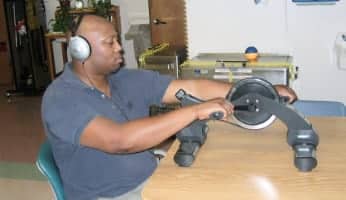Erin’s Communication Breakthrough: How IM Transformed Her School Year

Home - Testimonials - Pediatric Testimonials - Erin’s Communication Breakthrough: How IM Transformed Her School Year

Erin’s Communication Breakthrough: How IM Transformed Her School Year
Erin had a diagnosis of PDD/Autism.
She was verbal, but unable to have a purposeful conversation. Her voice was very high pitched, and other children turned away from her when she would go up to them and start reciting lines from various Disney movies or Barney episodes on TV.
She had been attending traditional OT/PT and Speech therapy visits for 7 out of her 8 years of life and the family was reaching burn out status, as her progress seemed to be very slow.
Exploring Interactive Metronome
Prior to her discharge, we decided to give one more thing a try. Interactive Metronome.
Mom had been reading about progress in attention and focus with children who performed the IM exercises. She wasn’t sure how Erin would do, but since it was summertime and their schedule wasn’t as busy it would be worth the time needed to give IM a try.
Initial Challenges
Initially, Erin had difficulty perceiving what she needed to do – she required hand over hand assistance during the first session for 50% of her exercises. Erin was unable to comply with the IM assessment tool, so we decided to just jump into some exercises to see if we could capture her attention.
Finding Success with Engagement
We struggled initially, but then discovered that if we included some type of object, she would participate!
Her favorite exercise was to pat her white bunny while she had a switch on her hand – initially hand over hand, but then after a few sessions, she began to pat her bunny to the beat!
IM is just so flexible that way – as long as we could involve a switch, we were good to go!
Continued Progress with IM
We continued for 15 sessions and at that point, mom decided to purchase an IM at Home unit to continue the exercises on a more regular basis but without the hassle of coming into the clinic 2-3x/week.
After just a few sessions, Erin began to chatter less, and listen more.
Mom and teacher noticed that she was following directions much better! Initially, her performance in the classroom was what began to change.
Erin still had difficulty at home, but parents were thinking that she was holding it together during her day (which she was unable to regulate before) at school, before becoming unglued when she got home.
After several months, mom checked in with me. They had been performing IM anywhere from 1-5x/week for 15-30 minutes at a time. At this point clapping was Erin’s favorite exercise although she still did enjoy looking at one of her favorite toys while performing her exercises.
Mom said that Erin was having the best school year ever!
Improvements at School
She was starting to participate in her classroom – even attempting to answer questions in class! Her handwriting dramatically improved as she went from illegible letters and numbers to neatly formed large letters.
Her teacher reported that social interaction in the classroom improved as Erin’s impulsiveness decreased and as her high pitch voice diminished. She was now sharing toys at recess, and was even beginning to learn how to play Candyland with her Aid’s assistance.
Improvements at Home
At home, improvements slowly began to show. She began to sit with a parent to listen to a story.
Although homework was still tough to get completed after a long day at school, Mom thought that she saw some improvement.
The Broader Impact of IM
There seems to be many ways that Interactive Metronome can help a child who has Autism.
Erin is only 1 of the many children with Autism that I have seen and performed IM with over the years. Dr. Stanley Greenspan himself noticed that children with autism showed improvement with the introduction of IM into their therapies.
You may think your child may not be able to perform the exercises, but with a creative therapist and a lot of patience, it is worth a try.
Wendy Harron, OTR/L is a graduate of Thomas Jefferson University in Philadelphia, PA. Wendy has extensive experience working with children suffering from Developmental Delay, Down Syndrome, Cerebral Palsy, Learning Disabilities, ADD/ADHD, Sensory Processing Disorder, and various other genetic and developmental disabilities. She has also completed specialized training in the areas of sensory integration, autism, developmental disabilities, cerebral palsy, seating and positioning/ wheelchairs/equipment and ADD/ADHD. She uses the Interactive Metronome in her practice regularly and has seen wonderful results.




